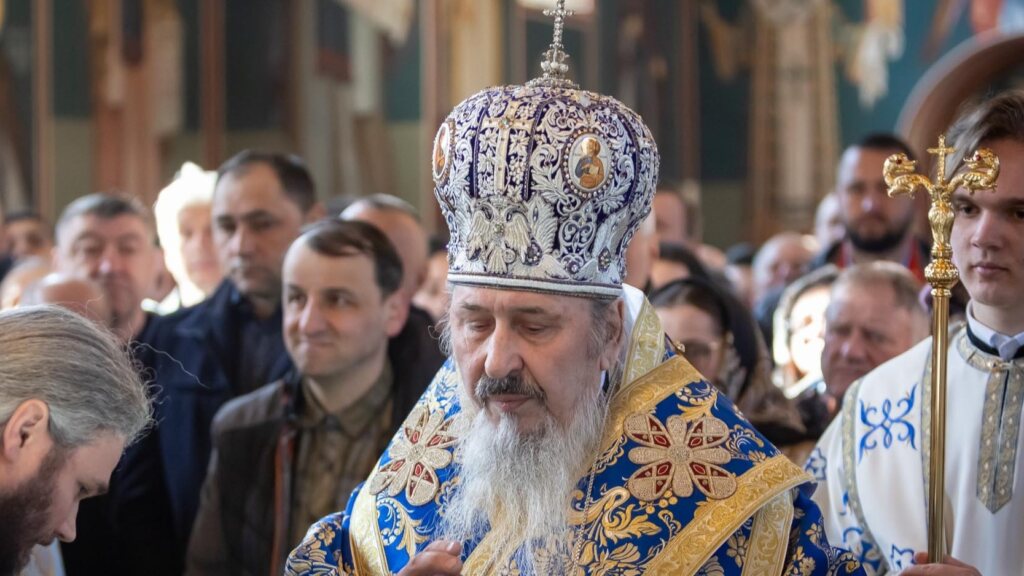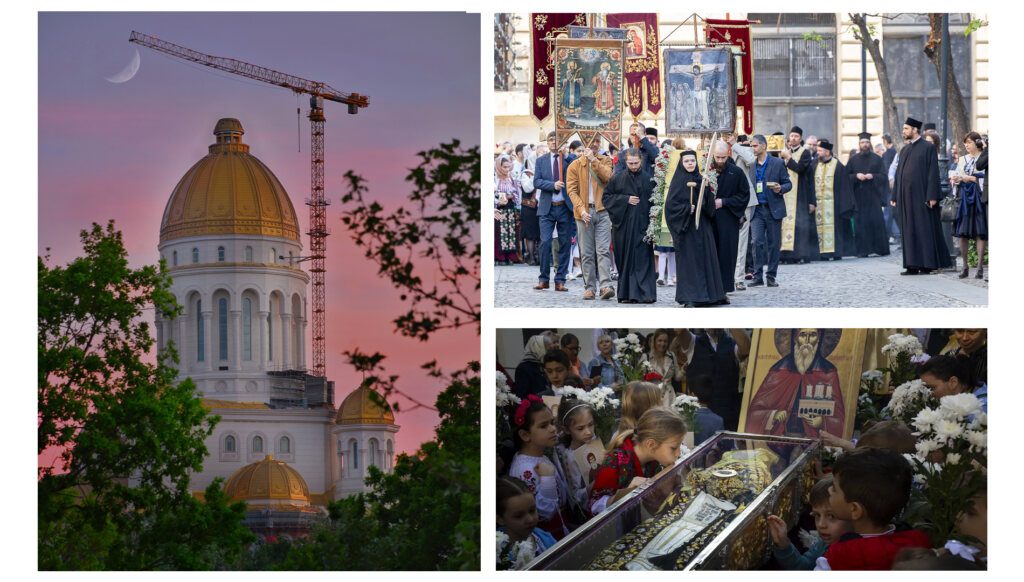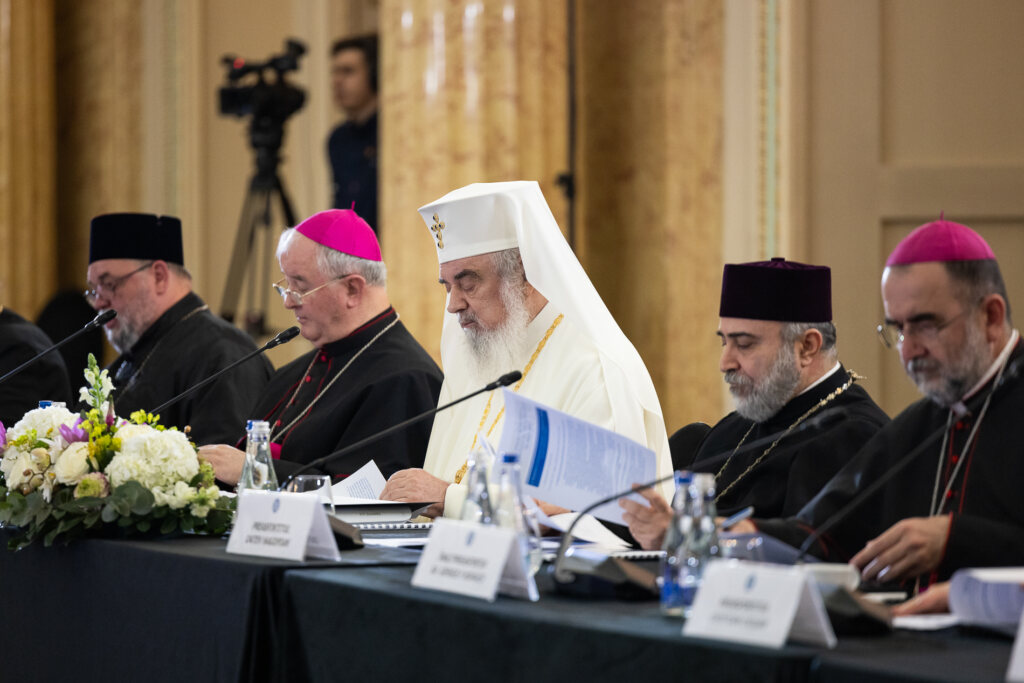Saint Philothea (Philofthea) of Argeş
She was born in Trnovo, the old capital of Bulgaria, around 1206. Her father was a farmer, and her mother was from Wallachia. She died when Philothea was still a child, and her father remarried.
The child was often punished by her stepmother, who accused her of being disobedient, and of giving their possesions away to the poor. Her father chastised her for this, but Philothea continued to attend church services and to do good to others, just as her mother had taught her. As she grew older, she was adorned with the virtues of prayer, virginity, and almsgiving.
Saint Philothea used to bring food to her father, who was out working in the fields. Not all of the food reached him, however, because the girl would give some of it to the poor children begging in the street. When he complained to his wife that she did not prepare enough food for him, she replied, “I send you plenty of food. Ask your daughter what she does with it.”
Becoming angry with Philothea, her father decided to spy on her to see what happened to the food. From a place of concealment, he saw her giving food to the poor children who came to her. In a violent rage, he took the axe from his belt and threw it at the twelve-year-old girl, hitting her in the leg. The wound was mortal, and she soon gave her pure soul into God’s hands.
The man was filled with fear and remorse, and tried to lift his daughter’s body from the ground, but it became as heavy as a rock. Then the wretch ran to the Archbishop of Trnovo to confess his sin and explain what had happened. The Archbishop and his clergy went with candles and incense to take up the martyr’s body and bring it to the cathedral, but even they were unable to lift it.
The Archbishop realized that Saint Philothea did not wish to remain in her native land, so he began to name various monasteries, churches, and cathedrals to see where she wished to go. Not until he named the Monastery of Curtea de Argesh in Romania were they able to lift her holy relics and place them in a coffin. The Archbishop wrote to the Romanian Voievode Radu Negru, asking him to accept the saint’s relics.
The Archbishop and his clergy carried the holy relics in procession as far as the Danube, where they were met by Romanian clergy, monastics, and the faithful. Then they were carried to the Curtea de Argeş Monastery.
Many people have been healed at the tomb of Saint Philothea in a small chapel in the belltower behind the monastery church, and those who entreat her intercession receive help from her. Each year on December 7 there is a festal pilgrimage to the Monastery, and people come from all over Romania. The relics of Saint Philothea are carried around the courtyard in procession, and there are prayers for the sick.
The holy Virgin Martyr Philothea is venerated in Romania, Bulgaria, and throughout the Orthodox world.
Troparion — Tone 8
The blessed Philothea cries out to her Lord with great love, / offering to Him the martyrdom which she endured for Him. / She was buried with Him in Baptism that she might rise with Him, / so, by her sufferings, she died that she might live in Him. / Having given the pure oblation of her life to Christ, now she reigns with Him in glory. / By her prayers, O Christ God, in Thy mercy, save our souls.
Saint Ambrose, Bishop of Milan
He was born in the year 340 into the family of the Roman prefect of Gaul (now France). Even in the saint’s childhood there appeared presentiments of his great future. Once, bees covered the face of the sleeping infant. They flew in and out of his mouth, leaving honey on his tongue. Soon they flew away so high that they could no longer be seen. Ambrose’s father said that the child would become something great when he reached manhood.
After the death of the father of the family, Ambrose journeyed to Rome, where the future saint and his brother Satyrius received an excellent education. About the year 370, upon completion of his course of study, Ambrose was appointed to the position of governor (consular prefect) of the districts of Liguria and Aemilia, though he continued to live at Mediolanum (now Milan).
In the year 374 Auxentius, the Arian Bishop of Mediolanum, died. This led to complications between the Orthodox and the Arians, since each side wanted to have its own bishop. Ambrose, as the chief city official, went to the church to resolve the dispute.
While he was speaking to the crowd, suddenly a child cried out, “Ambrose for bishop!” The people took up this chant. Ambrose, who at this time was still a catechumen, considered himself unworthy, and tried to refuse. He disparaged himself, and even tried to flee from Mediolanum. The matter went ultimately before the emperor Valentinian the Elder (364-375), whose orders Ambrose dared not disobey.
He accepted holy Baptism from an Orthodox priest and, passing through all the ranks of the Church clergy in just seven days, on December 7, 374 he was consecrated Bishop of Mediolanum. He dispersed all his possessions, money and property for the adornment of churches, the upkeep of orphans and the poor, and he devoted himself to a strict ascetic life.
Ambrose combined strict temperance, intense vigilance and work within the fulfilling of his duties as archpastor. Saint Ambrose, defending the unity of the Church, energetically opposed the spread of heresy. Thus, in the year 379 he traveled off to establish an Orthodox bishop at Sirmium, and in 385-386 he refused to hand over the basilica of Mediolanum to the Arians.
The preaching of Saint Ambrose in defense of Orthodoxy was deeply influential. Another noted Father of the Western Church, Saint Augustine (June 15), bore witness to this, having accepted holy Baptism in the year 387 by the grace of the preaching of the bishop of Mediolanum.
Saint Ambrose also actively participated in civil matters. Thus, the emperor Gracian (375-383), having received from him the “Exposition of the Orthodox Faith” (De Fide), removed, by decree of the saint, the altar of Victory from the halls of the Senate at Rome, on which oaths were wont to be taken.
Displaying a pastoral boldness, Saint Ambrose placed a severe penance on the emperor Theodosius I (379-395) for the massacre of innocent inhabitants of Thessalonica. For him there was no difference between emperor and commoner. Though he released Theodosius from the penance, the saint would not permit the emperor to commune at the altar, but compelled him to do public penance.
The fame of Bishop Ambrose and his actions attracted to him many followers from other lands. From far away Persia learned men came to him to ask him questions and absorb his wisdom. Fritigelda (Frigitil), queen of the military Germanic tribe of the Markomanni, which often had attacked Mediolanum, asked the saint to instruct her in the Christian Faith. The saint in his letter to her persuasively stated the dogmas of the Church. And having become a believer, the queen converted her own husband to Christianity and persuaded him to conclude a treaty of peace with the Roman Empire.
The saint combined strictness with an uncommon kindliness. Granted a gift of wonderworking, he healed many from sickness. One time at Florence, while staying at the house of Decentus, he resurrected a dead boy.
The repose of Saint Ambrose, who departed to the Lord on the night of Holy Pascha, was accompanied by many miracles. He even appeared in a vision to the children being baptized that night. The saint was buried in the Ambrosian basilica in Mediolanum, beneath the altar, between the Martyrs Protasius and Gervasius (October 14).
A zealous preacher and valiant defender of the Christian Faith, Saint Ambrose received particular renown as a Church writer. In dogmatic compositions he set forth the Orthodox teaching about the Holy Trinity, the Sacraments, and Repentance: “Five Books on the Faith” (De Fide); “Explication of the Symbol of the Faith” (Explanatio Symboli); “On the Incarnation” (De Incarnationis); “Three Books on the Holy Spirit” (De Spiritu Sancto); “On the Sacraments” (De Sacramento); “Two Books on Repentance” (De Paenitentia). In writings about Christian morality, he explained the excellence of Christian moral teaching compared to pagan moral teaching.
A well-known work of Saint Ambrose, “On the Duties of the Clergy” (De Officiis Ministrorum) evidences his deep awareness of pastoral duty. He stresses that those who serve in the Church should have not only the proper knowledge of Church services, but also the proper knowledge of moral precepts.
Saint Ambrose was also a reformer of Church singing. He introduced antiphonal singing (along the Eastern or Syrian form) into the Western Church, which became known as “Ambrosian Chant.” He also composed twelve hymns which were used during his lifetime. The hymn, “Thee, O God, we praise” (Te Deum), attributed to Saint Ambrose, entered into the divine services of the Orthodox Church (Molieben).
Troparion — Tone 4
In truth you were revealed to your flock as a rule of faith, / an image of humility and a teacher of abstinence; / your humility exalted you; / your poverty enriched you. / Hierarch Father Ambrose, / entreat Christ our God / that our souls may be saved.

Tr by oca.org






